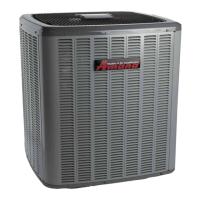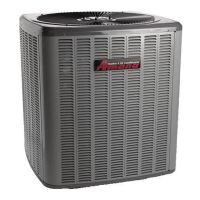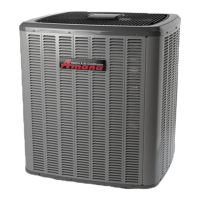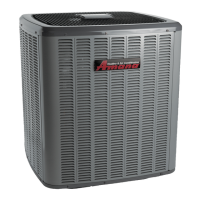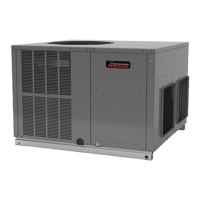SERVICING
41
With power ON:
1. Check the serial data plate for the compressor locked
rotor amps (LRA) rating.
2. Using an ampmeter, measure the amperage reading
for the run and common wires to the compressor. Since
the compressor motor overload will likely trip soon after
drawing locked rotor amps, this measurement should be
taken as soon as the compressor starts.
3. If the amperage reading roughly equals the compressor
LRA rating and all other checks have been completed,
locked rotor amps has been veried.
If the voltage, capacitor, overload and motor winding test
fail to show the cause for failure:
1. Remove unit wiring from disconnect switch and wire a
test cord to the disconnect switch.
2. With the protective terminal cover in place, use the
three leads to the compressor terminals that were
disconnected at the nearest point to the compressor
and connect the common, start and run clips to the
respective leads.
3. Connect good capacitors of the right MFD and voltage
rating into the circuit as shown.
4. With power ON, close the switch.
A. If the compressor starts and continues to run,
the cause for failure is somewhere else in the
system.
B. If the compressor fails to start - replace.
The crankcase heater must be energized a minimum of
four (4) hours before the condensing unit is operated.
Crankcase heaters are used to prevent migration or
accumulation of refrigerant in the compressor crankcase
during the o cycles and prevents liquid slugging or oil
pumping on start up.
A crankcase heater will not prevent compressor damage
1. Disconnect the heater lead in wires.
2. Using an ohmmeter, check heater continuity - should
test continuous. If not, replace.
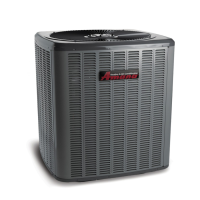
